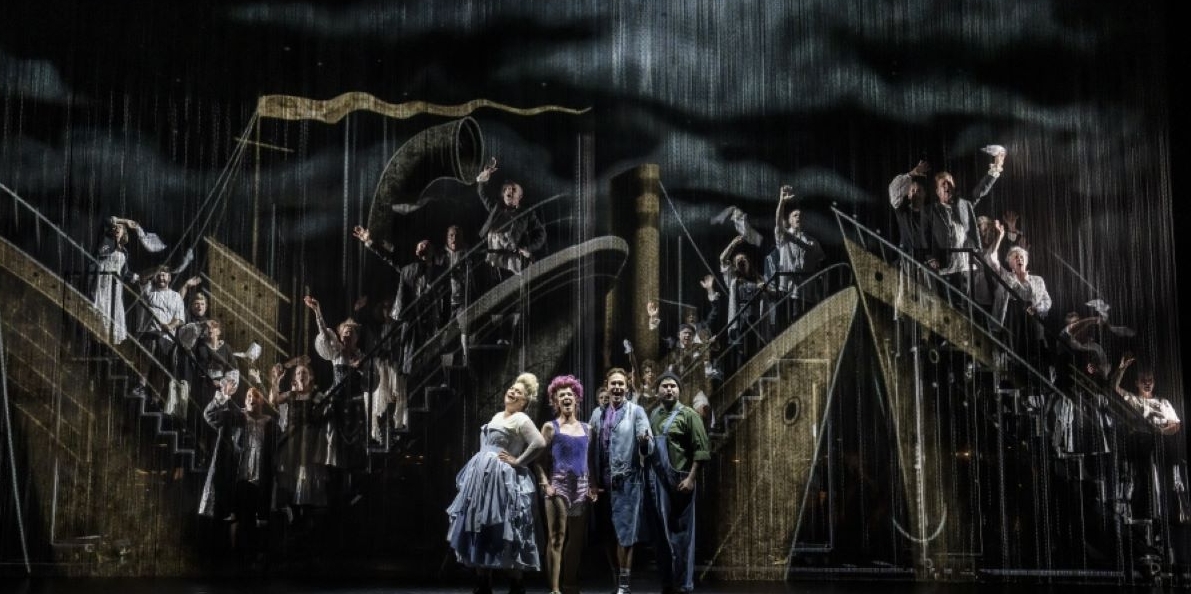Described in the programme by the director as “a hot mess of a piece”, Bernstein’s Candide has had a chequered history since it first played in New York in 1956, being re-written a number of times. Perhaps as a result it has had relatively few productions, but now Welsh National Opera has handed the piece to James Bonas, and visual virtuoso Gregoire Pont, with whom he worked at Opera de Lyon. The result is a spectacular success. The music has always been admired – quite rightly – and WNO has, as one would expect, found a group of brilliant singing actors to bring the madcap story to vibrant life. But to bring the whole project to another level, Bonas and Pont have set the story in a world of animation that takes us from Paris to Cadiz to Montevideo and to Istanbul. It is a visually stunning production but at no point do the visual fireworks (including the eruption of a volcano) take us away from the trajectory of the story, nonsensical as it may be.
Candide is brought up in the household of his father, the Baron, with his half siblings, Cunegonde and Maximilian under the optimistic tutelage of Dr Pangloss. Candide’s love for Cunegonde leads to the break-up of the family. Then war breaks out and this triggers a series of journeys, disasters, and re-unions as the lovers, along with Maximilian and Pangloss, meet the evils of greed and bigotry in eighteenth century Europe that were the target of Voltaire’s satire… evils that are all too evident in the world today. Au auto-da-fe in Lisbon, a brothel in Paris, a voyage to Montevideo, a Jesuit mission in the jungle, some magical sheep, a nightclub in Constantinople all figure in the none-too-logical story.
To tell this story Bonas has called on the visionary talents of Gregoire Pont and his team. The orchestra is on stage at the back, and in front of them is a mesh screen on to which the “scenery” is projected. This scenery is a constantly moving black and white collage of images – consistently eye-catching but with highlights like the volcanic eruption in Lisbon, the South American jungle, and the bright lights of Paris and Constantinople. The black and white animation is complemented by the colourful costumes and the whole effect is mesmerising.
Ed Lyon is a well-cast Candide. Though his reputation was largely made in baroque opera, his fine-grained tenor and his agile stage presence are just right for the naïve hero of this twentieth century masterpiece. Claudia Boyle is a superb Conegonde, never falling into the maiden-in-distress cliché, always full of vigour when in the forefront of the action and with a lovely soprano voice. WNO has cast the splendid Gillian Bevan as Dr Pangloss, and as narrator, and the choice works very well as the doctor’s message “all is for the best in the best of possible worlds” is tested and found wanting. Fine performances too from Mark Nathan as Maximilian, Madeleine Shaw as the Old Woman and various members of the WNO chorus. Bernstein’s stellar score rushes through many genres – sometimes Broadway musical, sometimes tango, sometimes jazz – and the WNO orchestra under the baton of Karen Kamensek more than meet the challenges.
The fascinating programme notes draw out the themes that Bernstein took from Voltaire and their relevance to the McCarthy-ite era in the USA when the piece was first performed – and points out how they link with some of the less savoury themes in public life today. But you don’t need to share Bernstein’s concerns to enjoy this operetta on its own terms. It is a simply superb piece of music theatre with wonderful music, great performers, and enhanced by one of the most original visual presentations you will ever see. Bravo WNO.

